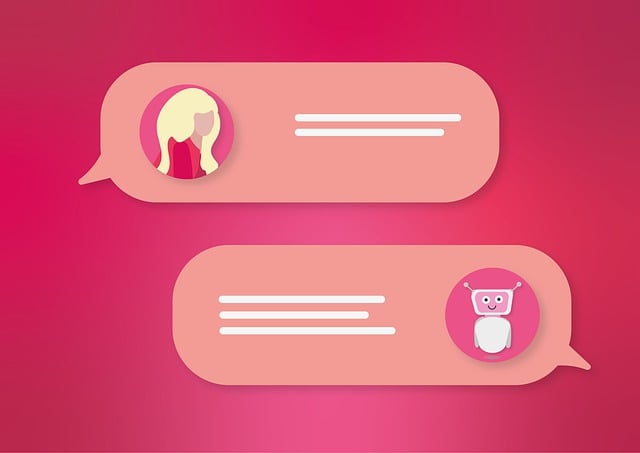AI chatbots have transformed digital interactions with their natural language capabilities, with two main types: rule-based and AI-driven. The latter, preferred for customer service and personal assistants, uses machine learning to understand complex queries and improve over time. Designing effective conversational flows is crucial, focusing on user experience through clear, easy navigation. Data preparation involves gathering diverse datasets, cleaning them, annotating information, and feeding these to machine learning algorithms for training. Successful deployment includes integration into platforms, rigorous testing, and continuous improvement based on user feedback and performance analysis in a competitive market.
Creating your own AI chatbot can transform how businesses engage with customers online. This comprehensive guide delves into the process of building effective AI chatbots, from understanding their diverse functionalities and choosing the right technology to designing intuitive conversational flows and preparing training data for accurate responses. We’ll also explore deployment strategies, testing methods, and continuous improvement techniques.
- Understanding AI Chatbots: Their Functionality and Types
- Choosing the Right Technology and Platform
- Designing Conversational Flows and User Experience
- Training and Data Preparation for Accurate Responses
- Deployment, Testing, and Continuous Improvement
Understanding AI Chatbots: Their Functionality and Types

AI chatbots have transformed the way we interact with technology, offering a seamless and human-like conversational experience. These intelligent agents are designed to process natural language input and generate responses, making them an integral part of our digital landscape. Understanding their functionality is key to creating effective communication tools.
There are primarily two types of AI chatbots: rule-based and artificial intelligence-driven. Rule-based chatbots follow a set of predefined rules and scripts to respond to user queries. They excel at handling simple, structured tasks and can provide quick answers based on programmed knowledge bases. In contrast, AI-driven chatbots leverage machine learning algorithms and vast amounts of data to learn patterns and generate contextually relevant responses. These advanced chatbots can understand complex queries, adapt to new information, and continuously evolve their conversational abilities, making them a popular choice for customer service, support, and personal assistants in various online platforms.
Choosing the Right Technology and Platform

When creating an AI chatbot, selecting the right technology and platform is a critical first step. The market offers various options, each catering to different needs and complexities. For instance, cloud-based platforms provide scalability and accessibility, making them ideal for businesses wanting to quickly deploy simple chatbots. These platforms often integrate with popular messaging apps, enabling users to interact with AI chatbots online via familiar interfaces.
On the other hand, custom development allows for more intricate and specialized chatbots. This route is beneficial for complex use cases, such as industry-specific applications or those requiring advanced natural language processing (NLP) capabilities. Choosing the right technology depends on factors like desired features, budget, and the team’s technical expertise. Ultimately, understanding your chatbot’s purpose and target audience will guide you in selecting the best tools to bring your AI chatbot to life.
Designing Conversational Flows and User Experience

Designing the conversational flow is a crucial step in creating an effective AI chatbot for your online platform. It involves crafting a user journey that mimics natural human conversation while achieving specific goals. Consider the various user intents and create paths that guide the chat through problem-solving, information retrieval, or engaging in casual dialogue. Each interaction should build upon the previous one, ensuring a smooth and intuitive experience.
The user experience (UX) plays a vital role in the chatbot’s success. Design conversations that are easy to navigate, with clear prompts and responses. Use simple language and avoid complex jargon to cater to a broad audience. Incorporate interactive elements like buttons or menus for users to make choices, and ensure the flow adapts based on user input. A well-designed UX will keep users engaged and satisfied, enhancing their overall interaction with your AI chatbot online.
Training and Data Preparation for Accurate Responses

Training and preparing data is a crucial step in developing an AI chatbot that delivers accurate responses. The process begins with gathering a diverse dataset relevant to the chatbot’s intended purpose. This data can include customer support conversations, FAQs, product descriptions, or any text that reflects the knowledge base the chatbot will draw from. The quality and variety of this data directly impact the chatbot’s performance, so it’s essential to source and clean it meticulously.
Once collected, the data is processed and formatted, ensuring consistency and relevance. This step often involves tasks like data annotation, where specific information is labeled for different categories or entities. Machine learning algorithms then utilize this prepared data to train the chatbot models, allowing them to learn patterns, understand context, and generate appropriate responses when interacting with users through various online platforms, enhancing the overall user experience with AI chatbots.
Deployment, Testing, and Continuous Improvement

After developing your AI chatbot, the next crucial steps are deployment, thorough testing, and continuous improvement. Deployment involves integrating your chatbot into existing platforms or creating new interfaces where users can interact with it. This could be through a website, mobile app, messaging platforms, or voice assistants. Once deployed, extensive testing is essential to ensure the chatbot functions as intended across various scenarios and user inputs. Testing should cover a wide range of functionalities, including accurate response generation, context understanding, and seamless integration with backend systems.
Continuous improvement is vital for any successful AI chatbot. Regularly collect user feedback, monitor performance metrics, and analyze user interactions to identify areas for enhancement. Update and refine the chatbot’s knowledge base, improve its algorithms, and add new features based on this data. This iterative process allows your chatbot to adapt to changing user needs and stay competitive in the rapidly evolving landscape of AI chatbots online.
Creating an AI chatbot involves a strategic approach, from understanding its diverse functionalities and types to selecting the right technology, designing intuitive conversational flows, and training with quality data. By leveraging the power of online AI chatbots, businesses can enhance customer interactions, streamline processes, and deliver personalized experiences at scale. Through continuous deployment, testing, and refinement, you can ensure your chatbot remains effective and adapts to user needs in a dynamic digital landscape.
